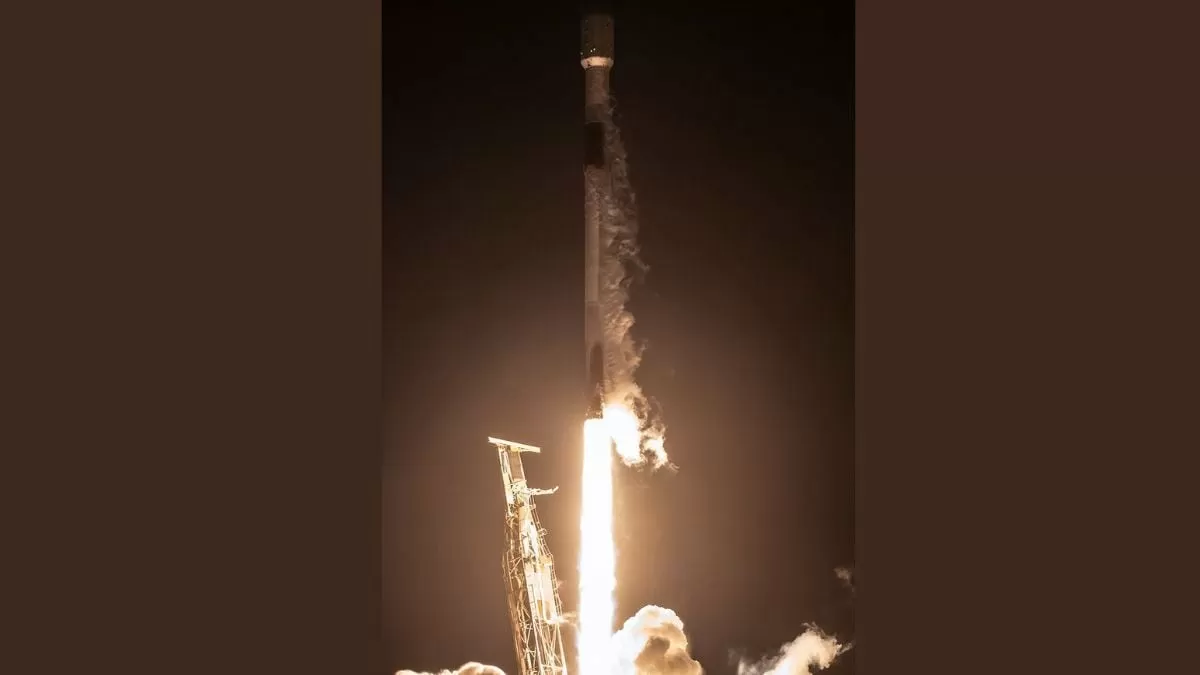NASA’s Electrojet Zeeman Imaging Explorer (EZIE) mission has taken off on a historic journey aboard a SpaceX Falcon 9 rocket from Vandenberg Space Force Base. This mission marks a significant step forward in our understanding of Earth’s atmosphere and its connection to the Sun.
The EZIE mission consists of a trio of small satellites that will map auroral electrojets, powerful currents in Earth’s atmosphere that are linked to solar storms. These currents, also known as the Northern and Southern Lights, are a spectacular display of light that can be seen in the polar regions. However, they also have a significant impact on our planet’s magnetic field and can disrupt communication and navigation systems.
The launch of the EZIE mission is a result of a collaboration between NASA and SpaceX, showcasing the power of public-private partnerships in advancing scientific research. The Falcon 9 rocket, known for its reliability and cost-effectiveness, has once again proven its capabilities by successfully delivering the EZIE satellites into orbit.
The EZIE satellites are equipped with state-of-the-art instruments that will collect data on the auroral electrojets and their effects on Earth’s atmosphere. This data will be used to enhance space weather prediction models, which are crucial for protecting our technology and infrastructure from the harmful effects of solar storms. It will also provide valuable insights into the complex interactions between the Sun and Earth’s magnetic field.
One of the most exciting aspects of the EZIE mission is its potential to improve our understanding of planetary magnetism. The data collected by the satellites will not only help us understand Earth’s magnetic field but also provide valuable insights into the magnetic fields of other planets in our solar system. This could lead to groundbreaking discoveries and advancements in our knowledge of the universe.
What makes the EZIE mission even more remarkable is its innovative approach to studying the auroral electrojets. Instead of traditional imaging techniques, the satellites will use a technique called Zeeman imaging, which measures the magnetic field strength of the auroral currents. This will provide a more detailed and accurate picture of the electrojets, allowing scientists to better understand their behavior and impact on Earth.
The launch of the EZIE mission is a testament to NASA’s commitment to exploring and understanding our planet and the universe. It also highlights the agency’s dedication to using cutting-edge technology and innovative approaches to advance scientific research.
The successful launch of the EZIE mission is just the beginning of an exciting journey. Over the next two years, the satellites will collect data and transmit it back to Earth, where it will be analyzed by scientists. This data will not only benefit the scientific community but also have practical applications in improving space weather forecasting and protecting our technology and infrastructure.
The EZIE mission is a reminder of the importance of space exploration and its impact on our daily lives. It also serves as a source of inspiration for future generations of scientists and engineers, who will continue to push the boundaries of our knowledge and understanding of the universe.
In conclusion, the launch of the EZIE mission is a significant achievement for NASA, SpaceX, and the scientific community. It has opened up new possibilities for studying the auroral electrojets and their effects on Earth’s atmosphere. The data collected by the satellites will undoubtedly lead to groundbreaking discoveries and advancements in our understanding of the universe. We can only imagine what other mysteries and wonders await us as we continue to explore and unlock the secrets of our universe.

